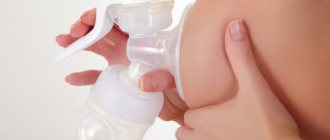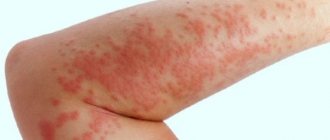VK
Buffer
The child grows up and needs breast milk less and less. His sucking reflexes fade away, and his stomach easily digests food from an adult table. During natural weaning, the amount of mother's milk gradually decreases, and lactation gradually fades away. But there are times when you have to abruptly stop feeding your baby and then the question arises of how to get rid of breast milk.
Frequent feeding

Milk production occurs in a woman’s body with the direct participation of the hormone prolactin.
And the main stimulant for increasing the amount of breast milk is frequent attachment of the baby to the breast. The correct way of feeding is genetically determined.
Quite often, not without the participation of adults, the baby forgets about this.
It is easier for him to get enough from a bottle; it does not require additional effort. In this case, it is important to awaken what is inherent in nature.
Breastfeeding a newborn should be done frequently, on demand. There is no need to take long breaks; during the daytime, you can put the baby to the breast every hour on the initiative of the mother. At night, you should offer your baby the breast as soon as he starts to move in his sleep. Approximately 3-4 times a night you can organize attachments if the baby is sleeping.
You can determine whether your newborn is getting enough food by the frequency of urination. There must be at least twelve of them. If the number of urinations is less, it means that the baby does not have enough nutrition, he is starving.
How to understand that a child is ready to wean
It is better to stop feeding when the baby is ready for it. Pediatricians recommend breastfeeding children until they are two years old, and stopping lactation smoothly.
The following signs indicate that your baby is ready to wean off the breast completely:
- The baby wakes up less often at night and can fall asleep without his mother.
- He can be distracted from feeding with a book or toy.
- A baby may refuse breast milk if offered an alternative: water or other food.
- During daytime sleep, the child does not wake up to eat.
- The baby suckles less and less often. The number of applications becomes no more than three per day.
In this case, it is enough for the mother to wear a tight bra and express the breasts a little if they are full and causing discomfort. Lactation disappears on its own.
A gynecologist may recommend taking hormonal medications if a child abruptly abandons breastfeeding and the mother’s body simply does not have time to adapt to life without feeding.
Skin to skin contact

To restore lactation, it is important to establish a continuous and close contract between mother and child, to ensure the continuation of the unity that he experienced while in the womb.
The duration of breastfeeding depends on whether there was skin-to-skin contact immediately after the birth of the baby.
The question arises, how long should you keep your baby at your breast?
Many people believe that the child gets full within the first 10-15 minutes, and then begins to indulge. And for this reason, parents limit the time they suck. This is not worth doing, because being next to the mother, feeling her breath, the baby enjoys, calms down, and warms up. This allows not only to improve lactation, but also to maintain communication physically and emotionally.
Skin-to-skin contact is especially important if the baby was born by caesarean section. At the moment of contact, a woman is more sensitive to the hormone oxytocin, which is responsible for maternal instinct.
Warm shower before feeding

If you have problems with lactation, experts advise taking a warm shower.
The benefits of this procedure are as follows:
- Water helps to relax the body, which makes it easier for milk to flow out.
- Light breast massage can increase milk flow.
- A warm shower helps not only with a lack of milk, but also with its stagnation.
- The sound of water affects the brain receptors, which are responsible for the production of hormones that trigger the process of milk formation.
It is enough to stand in a warm shower for a few minutes before feeding. This water procedure is also useful when a woman needs to express milk.
Rest and sleep while breastfeeding

Adequate sleep is very necessary for a nursing mother. With a lack of rest, the production of the hormone prolactin, which is responsible for breastfeeding, is reduced.
Therefore, while your baby is sleeping, you should not try to redo everything, it is more important to get quality rest. The main component of good lactation is sleep.
Infants sometimes have to get up 3 times a night, since the opinion that the night break between feedings should be at least 6 hours is considered erroneous. Some mothers easily tolerate getting up at night, others need long, uninterrupted sleep.
At night, children often ask for food. At the same time, babies need not only the next portion of milk, but also constant contact with their mother. The issue can be resolved if you combine the needs of both parties - go to bed together. Co-sleeping was previously considered undesirable, but it has several benefits.
The baby will feel calm and protected, and the woman will produce the necessary hormone, this happens best at night. Problems with lactation will fade into the background.
When does breast milk begin to be produced?
In the first few days after birth, colostrum arrives. There is not a lot of it, but its calorie content is enough for the baby to get enough. Milk production begins 3-4 days after the baby is born, and everyone’s body is different; it happens that it appears on the 2nd or 9th day. A delay of up to 10 days is considered normal. Therefore, if there is no milk immediately after birth, nothing needs to be done. The body knows how much colostrum a baby needs.

When milk begins to be produced, feed your baby on demand.
No pumping
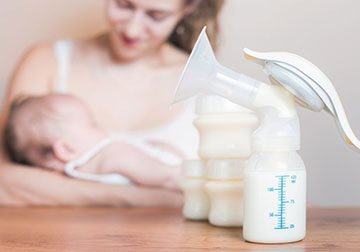
Expressing milk after each feeding provokes more milk production. Whether this procedure is necessary is currently a controversial issue.
If the mother feeds the baby on demand, there is no need for regular pumping.
On the contrary, with sufficient breast stimulation, the woman’s body itself “understands” how much milk needs to be produced for feeding.
Expressing breast milk disrupts the body's receipt of correct information . By the next feeding, a larger amount will be produced, which the baby will not be able to handle. This can cause stagnation of milk in the breast, which increases the risk of developing inflammatory processes in the mammary glands.
Expression should be used in the following cases:
- hardening of the nipples;
- mastitis;
- cracks;
- weakened baby;
- premature baby;
- forced separation from the baby.
Pumping will allow you to supplement your weak baby, who quickly gets tired and falls asleep during feeding, with breast milk without replacing it with artificial formula. After the child gets stronger, you can abandon this procedure.
Contraindications to stopping feeding
It is not always possible to stop feeding only of your own accord. The condition of the baby should be taken into account.
In the following cases, it is better to postpone cessation of lactation:
- The baby is teething. Sucking the breast reduces pain and soothes.
- The baby is sick. Milk contains interferon, which helps the small organism more easily endure an infectious disease.
- Climate change. Many children get sick during the holidays. Their body has a hard time adapting to new weather conditions. In this case, breast milk will strengthen the immune system and help adapt to new conditions.
- Stress. The baby reacts to any changes in the family. If you are going through a move, divorce, or the loss of a loved one, you may want to hold off on stopping breastfeeding.
It is not recommended to stop feeding during the summer heat. During this period, outbreaks of intestinal infections occur. Breast milk helps the baby stay healthy and not contract a dangerous disease.
Refusal of pacifiers and bottles
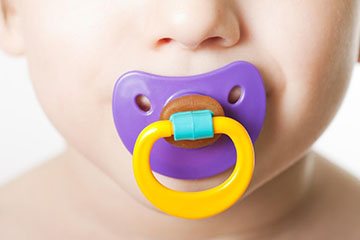
Another important condition for establishing lactation is avoiding pacifiers and pacifiers.
Experience shows that the use of bottles interferes with breastfeeding. The fact is that the child gets used to the nipples.
From them, liquid flows more freely. After the bottle, he no longer wants to make an effort and pull out his mother’s nipple to get milk. As a result, the baby refuses to take the breast, turns away and screams.
If there is a need to supplement the baby's feeding or give him other food products, it is best to use a special spoon. Bottles can be used for feeding only after breastfeeding has been fully established. In the first days and weeks of a little person's life, he needs to be breastfed only.
Termination of lactation by mother's decision
An older child no longer needs frequent feeding as a newborn. Lactation consultants advise feeding the child until self-weaning, but not all parents are ready for this. After all, self-weaning can occur at three or four years.
If your baby is two years old, you can begin to reduce the number of breastfeedings.
A TEST will help you understand whether your child is ready for weaning
Natural cessation of feeding occurs in three stages:
- Eliminate daytime applications. Replace milk with reading a book, drawing or hugging. Teach your child to fall asleep during the day without breastfeeding. Stroke him, sing a song, run through his hair.
- Replace morning breastfeeding with a full breakfast. You can cook porridge for your baby or cut fruit. Meals should be tasty and healthy.
- Start putting your baby to sleep without the breast. Canceling night feedings is the hardest thing to do. But you have to wait three days. The baby will quickly get used to it and stop being capricious. During this period, offer the baby warm water.
If the process is gradual, then the question of how to remove breast milk will not bother you. Lactation will smoothly end on its own. Your breasts may swell a little. In this case, it is worth expressing it a little.
Canceling additional fluids for a newborn
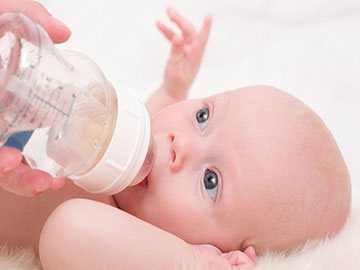
Many mothers believe that breast milk is food. And they feed the baby with plain water.
This is strictly forbidden for the following reasons. Human milk contains only 12% nutrients, its main component being water.
Therefore, until the age of six months, there is no need to give additional water to the child, unless there is a medical indication for this.
Giving water to a baby is also dangerous. This creates a feeling of false satiety in the baby; he does not receive enough nutrients, which can affect his health, development and weight gain. Supplementation can lead to disruption of the baby's digestive system, and it also puts additional stress on the kidneys.
The composition of breast milk at the beginning and at the end of feeding is not the same. First, the child receives lactose, and then lactase. This enzyme supports the breakdown of lactose and promotes its absorption. If you give your baby extra water or express after feeding, he will not receive enough of the necessary substances, which will lead to indigestion. In most cases, this is what causes colic in the tummy of a baby.
Ignorance of these features contributes to the spread of the opinion that the mother’s milk is bad or that the baby has lactose intolerance.
When drinking mother's milk, the baby eats and drinks at the same time, so additional feeding with water is simply not required. But this is true for those children who are breastfed.
The situation is different for babies who are bottle-fed. Babies receiving formula should be given clean water between feedings. This is especially important in cases where children are fed an unadapted or overly concentrated formula.
In what cases should lactation be stopped abruptly?
The end of lactation does not always go smoothly. Some mothers are never able to establish breastfeeding due to health problems. Here are the factors that force a parent to stop feeding abruptly:
- the child refuses to breastfeed;
- there are medical indications for stopping feeding;
- the onset of a new pregnancy;
- Mom going to work;
- emotional burnout and the need for privacy.
The child is offered a substitute for the mother's breast: a pacifier and a bottle. The smaller the baby, the easier it is for him to switch to new food.
But it’s not easy for mom. Her breasts fill with milk, become hard and hurt. Lactostasis appears, which can develop into mastitis. In this case, redness of the chest and high temperature are added to the unpleasant sensations in the chest. Therefore, it is important to know how to get rid of breast milk.
